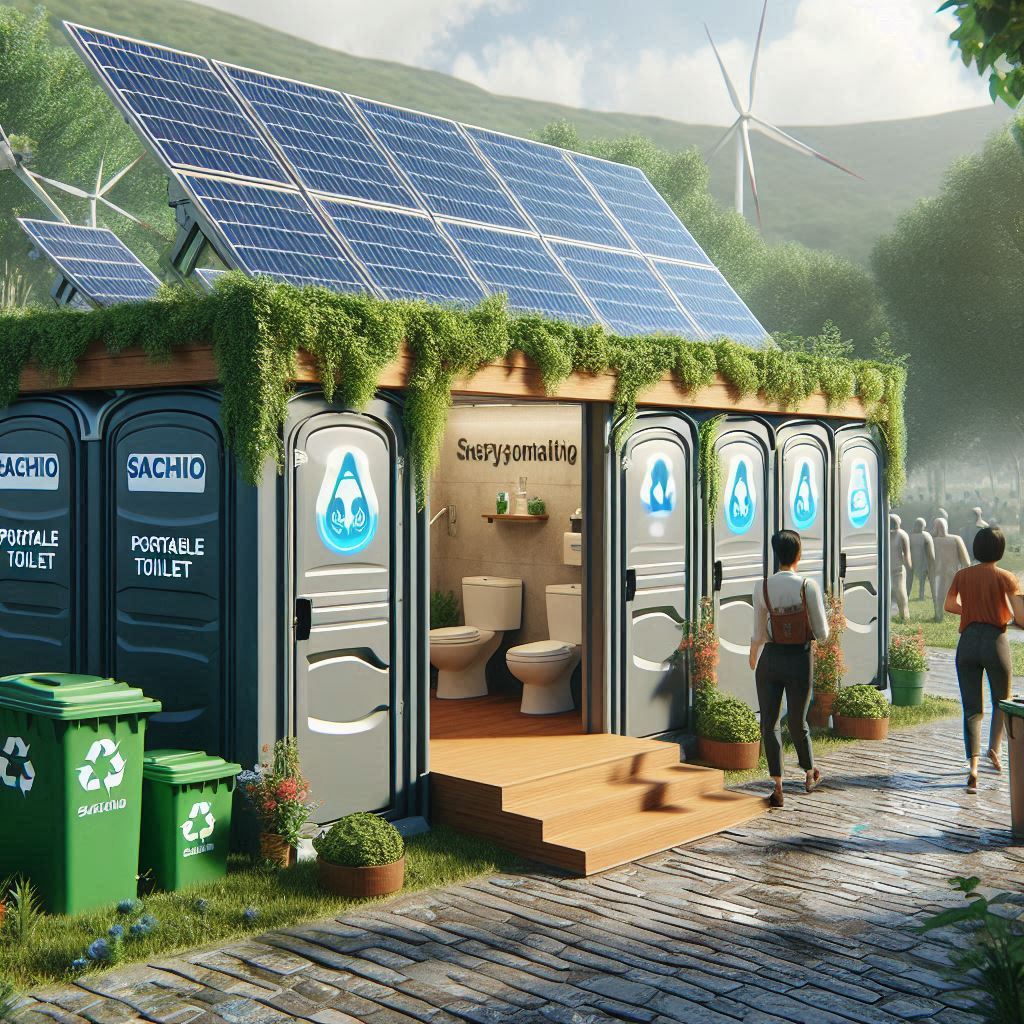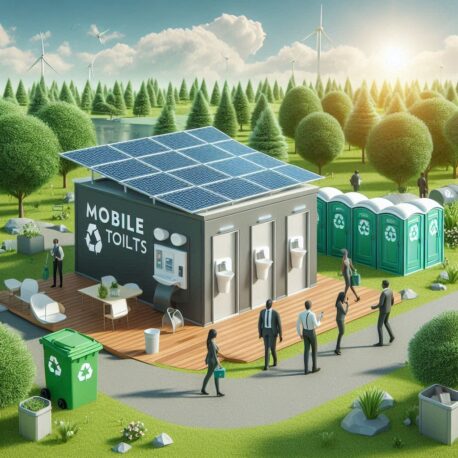- Your cart is empty
- Continue Shopping
How Mobile Toilets are Pioneering Sustainable Solutions!

Flush Away Environmental Concerns: How Mobile Toilets are Pioneering Sustainable Solutions!

Every facet of our everyday activities needs to be carefully examined for its environmental impact in the aim of sustainable living and responsible resource management. Even though they’re frequently linked to convenience and cleanliness, mobile toilets have a big environmental impact. However, creative thinking and technological breakthroughs are opening the door to more ecologically responsible solutions. This blog article will look at sustainability strategies and solutions used by the portable sanitation sector, as well as the effects of mobile toilets on the environment.
Understanding the Environmental Impacts
1. Water Consumption: Conventional mobile toilets require freshwater to flush, which exacerbates the problem of water shortage, particularly in dry areas or during droughts.
2. Chemical Usage: To reduce smells and decompose waste, a lot of portable toilets employ chemical treatments. If these substances are not handled or disposed of correctly, they may be detrimental to aquatic environments.
3. Energy Usage: Mobile toilets demand energy for operation, maintenance, and transportation, which increases air pollution and greenhouse gas emissions.
Sustainability Practices and Solutions
Industry participants are putting into practice a range of sustainability strategies and solutions to lessen the environmental impact of mobile toilets, including:


1. Water-saving Technologies: Producers are creating portable restrooms with water-saving features like composting toilets, waterless urinals, and low-flush systems. These developments lower the demand on nearby water sources and cut down on the amount of freshwater used.
2. Alternative Energy Sources: The carbon footprint of mobile restroom operations can be decreased by switching to renewable energy sources like solar power for ventilation and lighting systems. Solar-powered devices are especially ideal for outdoor gatherings and isolated areas with limited access to electricity.
3. Biodegradable and Eco-friendly Products: Mobile toilet operators are moving to biodegradable and eco-friendly deodorizers and cleaning agents in place of harsh chemicals. These goods present less of a risk to human health and are safer for the environment.
4. Waste Management and Reuse: Reducing the amount of waste produced by mobile toilets can be achieved by putting effective waste management techniques into place, such as sorting recyclables and composting organic waste. Some businesses are looking into creative ways to recycle waste materials, such turning organic materials into compost that is high in nutrients.
5. Education and Outreach: Promoting conscientious usage practices and educating users about the environmental effects of mobile toilets can help to foster sustainable behavior. A culture of environmental stewardship can be promoted by placing educational materials and signage in gathering places and construction sites.
Conclusion
Although mobile toilets are essential for preserving sanitation and public health in transient environments, it is important to consider their environmental impact. The mobile sanitation sector may reduce its environmental impact and help create a more sustainable future by embracing sustainability principles and putting creative solutions into effect. The need for eco-friendly mobile toilets from customers, event planners, and authorities will continue to spur innovation and constructive change in the sector.
1 Comment